- News
- Reviews
- Bikes
- Components
- Bar tape & grips
- Bottom brackets
- Brake & gear cables
- Brake & STI levers
- Brake pads & spares
- Brakes
- Cassettes & freewheels
- Chains
- Chainsets & chainrings
- Derailleurs - front
- Derailleurs - rear
- Forks
- Gear levers & shifters
- Groupsets
- Handlebars & extensions
- Headsets
- Hubs
- Inner tubes
- Pedals
- Quick releases & skewers
- Saddles
- Seatposts
- Stems
- Wheels
- Tyres
- Tubeless valves
- Accessories
- Accessories - misc
- Computer mounts
- Bags
- Bar ends
- Bike bags & cases
- Bottle cages
- Bottles
- Cameras
- Car racks
- Child seats
- Computers
- Glasses
- GPS units
- Helmets
- Lights - front
- Lights - rear
- Lights - sets
- Locks
- Mirrors
- Mudguards
- Racks
- Pumps & CO2 inflators
- Puncture kits
- Reflectives
- Smart watches
- Stands and racks
- Trailers
- Clothing
- Health, fitness and nutrition
- Tools and workshop
- Miscellaneous
- Buyers Guides
- Features
- Forum
- Recommends
- Podcast
TECH NEWS
Orbea’s Ordu gets lighter and more aero + video
Orbea has launched a new version of its Ordu time trial/triathlon bike that it says is lighter, stiffer and more aerodynamically efficient than before. It is being used by Team Cofidis in the Tour de France.
Orbea says that the new Ordu’s frame (medium size) is down from 1,500g to 1,400g while the fork is 552g from 646g. Orbea also claims that it has made the rear triangle 16% stiffer than previously for the more efficient transfer of power.
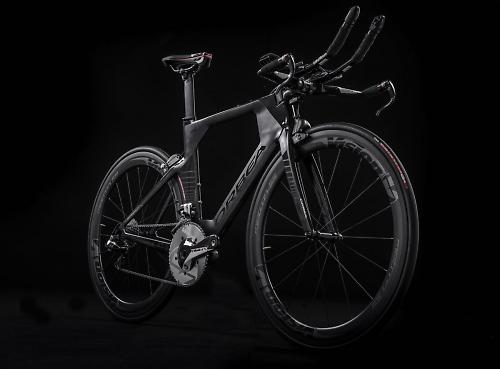
In terms of aerodynamics, Orbea says that the new Ordu has 26% less drag over a range of yaw (apparent wind) angles than the 2012 Orbea Ordu Gold (no rider on board) and 12% less drag than the 2015 one. Drag at 10° yaw is said to be 28% lower than that of the 2012 bike.
How has Orbea achieved these aero gains? They’re partly down to the Freeflow fork.
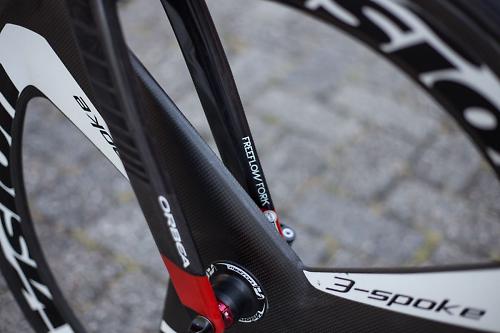
“Aerodynamic forks are typically designed to perform like aero frame tubes – optimised for directional movement through the wind,” says Orbea. “But the forward rotation of the spokes and today’s wider rims and tyres approaching from behind the fork (against the flow of wind as the wheel spins) creates a high pressure/high drag zone.
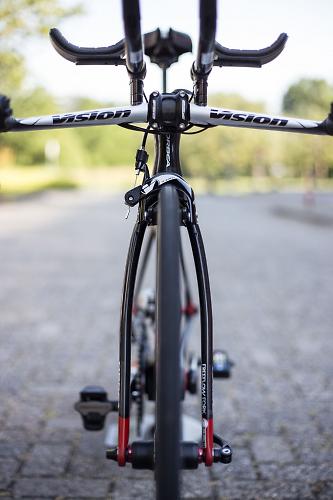
Freeflow spreads the fork legs away from this area to reduce pressure and turbulence. Normal directional aerodynamics remain unchanged but the bike gets faster because the airspace inside the Freeflow fork blades is less chaotic.”
Check out the picture above to see just how wide the space is between the fork legs and the wheel (bear in mind that it's a trispoke wheel so there are no angled spokes).
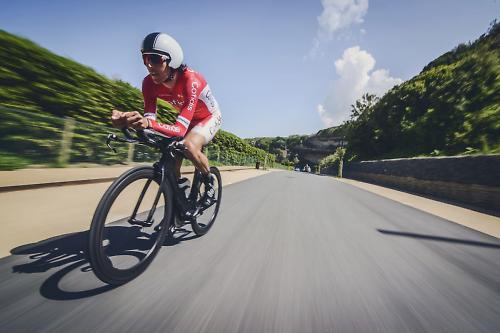
The Ordu’s head tube houses a 1in upper bearing and a 1 1/8in lower bearing as a way of providing stiffness without massively increasing the size of the frontal area, which would be detrimental to drag. The bottom bracket is oversized BB30 standard.

Orbea says that it has worked with the Engineering School at Mondragon University in the Basque region to analyse and test aerodynamic concepts during the design process.
“Our subtle improvements to a traditional airfoil are aimed specifically at helping riders go faster in conditions typically encountered on the road – faster at lower speeds and faster at higher yaw angles.”
Orbea says that the ‘bullet’ leading edge of the frame tube profiles opens airflow around the tube profile and improves airflow at higher yaw angles, while flattening the sides of the airfoil reduces the frontal area of the tube and offers better drag numbers at lower speeds.

Like many other brands, Orbea squares off the trailing edge of tube profiles, saving weight while getting the air to perform as if the tail was there. Orbea also says that this smooths airflow into bottle cages.

The Ordu uses what Orbea describes as an ‘aero-oval’ seatpost that includes two clamps that were developed with FSA, one with a setback of 23mm and the other with a setback of 49mm. The seatpost itself can be reversed to increase the total adjustable range.
The Ordu is compatible with any standard centre-bolt road brakes, but Orbea says it is optimised for the aerodynamic TriRig brake system.
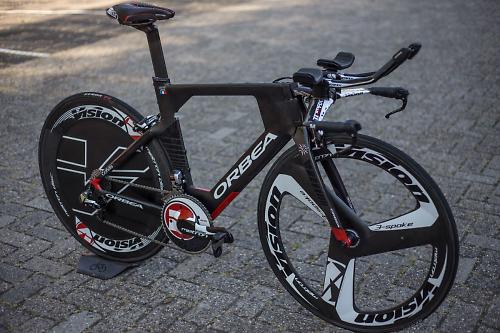
The Ordu is compatible with both mechanical and electronic shifting, the cables entering the top tube behind the stem. If you go for an electronic setup, the battery lives in a port in the seat tube’s rear wheel cutout.
The bike will take most 25mm tyres.
Here's Orbea's promo video for the new bike.
The Ordu will be available in various builds priced from £1,759 up to £6,799.
Mat has been in cycling media since 1996, on titles including BikeRadar, Total Bike, Total Mountain Bike, What Mountain Bike and Mountain Biking UK, and he has been editor of 220 Triathlon and Cycling Plus. Mat has been road.cc technical editor for over a decade, testing bikes, fettling the latest kit, and trying out the most up-to-the-minute clothing. He has won his category in Ironman UK 70.3 and finished on the podium in both marathons he has run. Mat is a Cambridge graduate who did a post-grad in magazine journalism, and he is a winner of the Cycling Media Award for Specialist Online Writer. Now over 50, he's riding road and gravel bikes most days for fun and fitness rather than training for competitions.
Latest Comments
- David9694 35 min 44 sec ago
this one is wide open for puns, come on people.
- BikingBud 36 min 17 sec ago
Do you mean this woman, who got out to marshall the truck through and is now walking back to said Wankpanzer which is blocking the road again as it...
- mark1a 51 min 29 sec ago
This simply isn't true. I've been running radar lights for 10 years now. I cycle mostly on rural roads, I get notified of approaching vehicles up...
- Rendel Harris 3 hours 21 min ago
Genuinely puzzled as to how you've extrapolated that from what I said. Care to explain?
- Pub bike 5 hours 31 min ago
He is up against the global trading system, which has obviously been in the news a lot lately. Framebuilders in other countries can undercut him,...
- rookybiker 17 hours 58 min ago
The trailer seems to connect to both ends of the rear axle. Can it do tight corners without dragging the tyre sideways?
- Destroyer666 18 hours 55 min ago
Have you owned Bont shoes? In my experience even the widest Lake shoes have had a bizarre form of narrowing way too much in the toe area. But the...
- froze 19 hours 22 min ago
Not sure if this is possible, but this news letter goes out all over the world, and some places like Decathlon does not send stuff to America, in...















Add new comment
1 comments
But not any prettier